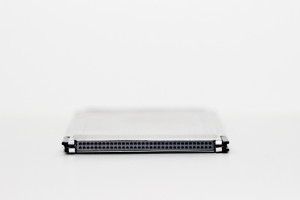Today we finally announced the first product by Make·Play·Live: Improv.
It’s an engineering board with one interesting difference compared to many others: it’s not one board, it’s two.
The actual machine is in a small board, its size is crucial and is kept at the bare minimum: why?

When the actual hearth of the device is kept small enough, it can be used as is in a wide variety of different devices, making possible to experiment more with an open, cheap, modular architecture.
but you can’t do that much if you have only the CPU card, at least it’s much more useful if it has and handful of input/output devices, right? That’s what the Improv board is for:

The CPU board has micro HDMI, micro USB, micro SD, with the Improv board you get power, Ethernet, full size USB and Sata (The extra connector on top among other things gives you VGA as well)
The software will come with Mer preinstalled featuring KDE and Plasma Active, again together with Mer’s OBS, a white canvas to create something new and great… what You will come up with?




I didn’t see it mentioned on Make|Play|Live, but I might’ve overlooked it: Does Improv have open drivers for the hardware?
Is it a viable solution to put into an end product or is it solely for prototyping purposes?
Pingback: Make-Play-Live już niedługo startuje [UPDATE] | KDEFamily
So, why aren’t there any pictures showing the two boards connected together, to get an idea of what things look like when combined?
Lots of pictures of the individual boards, but nothing showing them connected.
Would be nice to see a pic of the CPU and improv boards together, to see how they connect, and what the final size of the case would be.
Pingback: New Life for Vivaldi Tablet? Improv Takes the Stage | Michael McCallister: Notes from the Metaverse
I bought myself a Beagleboard Black earlier this year for a project, and it’s been sitting there collecting dust since I’ve been too busy with other stuff since. What’s the difference between the BBB and the Improv?
Also, and suggestions for what to build?
First of all sorry for taking so long for approve. I neglected the poor blog for a long time 🙂
some quick answers:
“Is it a viable solution to put into an end product or is it solely for prototyping purposes?”
depends what ports you need for the end product (that’s why it’s a modular system). the board itself has been designed with the tolerances and quality to become eventually a part of a consumer product.
So expect future hardware that is using it, or a revision of it.
Also, if you want to do a product based on it, or you know a company that might.. that’s what the partner network of Make Play Live is for 😉
“So, why aren’t there any pictures showing the two boards connected together, to get an idea of what things look like when combined?”
http://makeplaylive.com/images/improv/TN_improv_front.jpg
See the part with the micro-sd card slot, the micro hdmi and micro usb? that’s the CPU card plugged in beneath the board.
“What’s the difference between the BBB and the Improv?”
On the purely technical side I would say higher hardware specs and on board storage. On the less technical, this is designed to be the basis for modular open hardware design, so there will hopefully be multiple products based on this design, from the more developer-oriented ones like the Improv to completely consumer oriented ones (plural, not only Vivaldi 😉
[quote]“So, why aren’t there any pictures showing the two boards connected together, to get an idea of what things look like when combined?”
http://makeplaylive.com/images/improv/TN_improv_front.jpg
See the part with the micro-sd card slot, the micro hdmi and micro usb? that’s the CPU card plugged in beneath the board.[/quote]
Ah. I see. I thought the big black connector on the top of the Improv board was for connecting the CPU board. Didn’t realise the CPU board slotted underneath. (That’s the way I expected it to, but the images didn’t make it very clear.)
Thanks for the update!